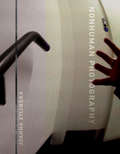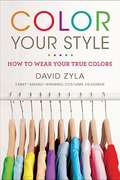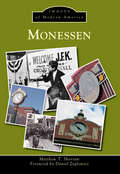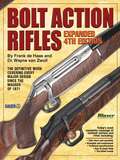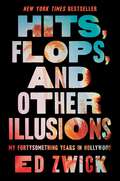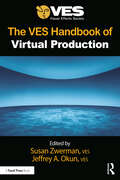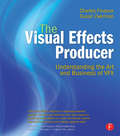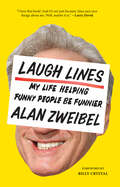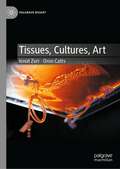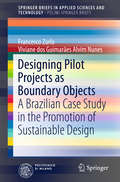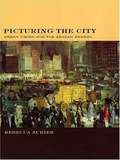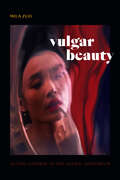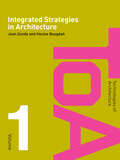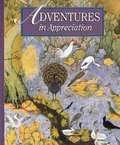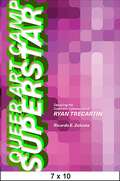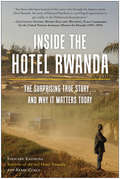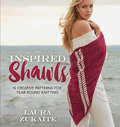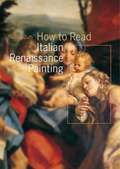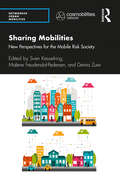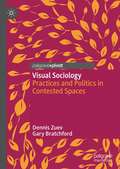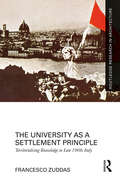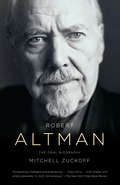- Table View
- List View
Nonhuman Photography (The\mit Press Ser.)
by Joanna ZylinskaA new philosophy of photography that goes beyond humanist concepts to consider imaging practices from which the human is absent, as both subject and agent.Today, in the age of CCTV, drones, medical body scans, and satellite images, photography is increasingly decoupled from human agency and human vision. In Nonhuman Photography, Joanna Zylinska offers a new philosophy of photography, going beyond the human-centric view to consider imaging practices from which the human is absent. Zylinska argues further that even those images produced by humans, whether artists or amateurs, entail a nonhuman, mechanical element—that is, they involve the execution of technical and cultural algorithms that shape our image-making devices as well as our viewing practices. At the same time, she notes, photography is increasingly mobilized to document the precariousness of the human habitat and tasked with helping us imagine a better tomorrow. With its conjoined human-nonhuman agency and vision, Zylinska claims, photography functions as both a form of control and a life-shaping force.Zylinska explores the potential of photography for developing new modes of seeing and imagining, and presents images from her own photographic project, Active Perceptual Systems. She also examines the challenges posed by digitization to established notions of art, culture, and the media. In connecting biological extinction and technical obsolescence, and discussing the parallels between photography and fossilization, she proposes to understand photography as a light-induced process of fossilization across media and across time scales.
Iditarod Memories: 30 Years of Poster Art from the Last Great Race
by Jona Van ZyleA collection of annual posters from the official artist of the Iditarod Trail Sled Dog Race. Included are stories about how each of the first 30 posters came to be created, and the stories they tell about the race.
Color Your Style
by David ZylaMove over Color Me Beautiful, an Emmy Award-winning costume designer shows women how to find their authentic style archetype. David Zyla has made women look sensational on the runway, television, and Broadway for twenty years. In Color Your Style ,David shows how every woman can unlock her authentic style based on a combination of her personality, her eight true colors, and one of twenty-four color-palette archetypes-from the Wholesome Flirt to the Romantic Poetess to The Maverick. Through quizzes, charts, and stories, women can discover the colors, clothes, and accessories that will attract love, power, energy, and attention. Color Your Style is like getting an astrological reading-only color-inspired-allowing you to learn more about yourself while you make over your wardrobe. We are at our best when we feel comfortable, confident, and know we look fantastic. Zyla and Color Your Style shows women how to be their best-without being slaves to designer labels or the latest trends. .
Monessen (Images of Modern America)
by Daniel Zyglowicz Matthew ShorrawNestled along a horseshoe curve of the Monongahela River in the Mid-Monongahela Valley of southwestern Pennsylvania, Monessen was settled in the mid-1800s, though it was not formally established and named until 1898, then chartered as a city in 1923. Throughout the 20th century, Monessen was known mainly for its industry, especially steel and wire. The city served as a site for Pittsburgh Steel until the decline of the steel industry. That has not stopped the caring and determined residents of Monessen from trying to recapture the vibrant culture of the city. This book reflects on the history of the city through the second half of the 20th century, showcasing how current residents have led Monessen into the 21st century.
Bolt Action Rifles
by Wayne ZwollVeteran author and respected shooting expert Dr. Wayne van Zwoll has made the most complete work ever published on bolt-action rifles even better by:Profiling the newest turnbolt actions and riflesTaking an in-depth look at the history of bolt gunsAnalyzing the latest trends in bold actionsOffering valuable tips on how to become a better shooter of bolt rifles
Hits, Flops, and Other Illusions: My Fortysomething Years in Hollywood
by Ed ZwickThis heartfelt and wry career memoir from the director of Blood Diamond, The Last Samurai, Legends of the Fall, About Last Night, and Glory, creator of the show thirtysomething, and executive producer of My So-Called Life, gives a dishy, behind-the-scenes look at working with some of the biggest names in Hollywood.&“I&’ll be dropping a few names,&” Ed Zwick confesses in the introduction to his book. &“Over the years I have worked with self-proclaimed masters-of-the-universe, unheralded geniuses, hacks, sociopaths, savants, and saints.&” He has encountered these Hollywood types during four decades of directing, producing, and writing projects that have collectively received eighteen Academy Award nominations (seven wins) and sixty-seven Emmy nominations (twenty-two wins). Though there are many factors behind such success, including luck and the contributions of his creative partner Marshall Herskovitz, he&’s known to have a special talent for bringing out the best in the people he&’s worked with, especially the actors. In those intense collaborations, he&’s sought to discover the small pieces of connective tissue, vulnerability, and fellowship that can help an actor realize their character in full. Talents whom he spotted early include Brad Pitt, Matt Damon, Denzel Washington, Claire Danes, and Jared Leto. Established stars he worked closely with include Leonardo DiCaprio, Anthony Hopkins, Tom Cruise, Julia Roberts, Anne Hathaway, Daniel Craig, Jake Gyllenhaal, Bruce Willis, Demi Moore, and Jennifer Connelly. He also sued Harvey Weinstein over the production of Shakespeare in Love—and won. He shares personal stories about all these people, and more. Written mostly with love, sometimes with rue, this memoir is also a meditation on working, sprinkled throughout with tips for anyone who has ever imagined writing, directing, or producing for the screen. Fans with an appreciation for the beautiful mysteries—as well as the unsightly, often comic truths—of crafting film and television won&’t want to miss it.
The VES Handbook of Virtual Production
by Susan Zwerman Jeffrey A. Okun Susan Thurmond O’NealThe VES Handbook of Virtual Production is a comprehensive guide to everything about virtual production available today – from pre-production to digital character creation, building a stage, choosing LED panels, setting up Brain Bars, in-camera compositing of live action and CG elements, Virtual Art Departments, Virtual Previs and scouting, best practices and much more. Current and forward-looking, this book covers everything one may need to know to execute a successful virtual production project – including when it is best to use virtual production and when it is not. More than 80 industry leaders in all fields of virtual production share their knowledge, experiences, techniques, and best practices. The text also features charts, technical drawings, color images, and an extensive glossary of virtual production terms. The VES Handbook of Virtual Production is a vital resource for anyone wishing to gain essential knowledge in all aspects of virtual production. This is a must-have book for both aspiring and veteran professionals. It has been carefully compiled by the editors of The VES Handbook of Visual Effects.
The VES Handbook of Virtual Production
by Susan Zwerman Jeffrey A. Okun Susan Thurmond O’NealOur handbook on Virtual Production is written in conjunction with the Visual Effects Society, guaranteeing the most expert advice in all areas of Virtual Production. It is a first of its kind handbook on this nascent technology, pooling insights from a vast array of different practitioners, to create a truly comprehensive reference book. It covers not only the software, hardware, and workflows, but also the types of jobs training needed for VP – the book starts from the ground up and provides an overview of what you need to learn before you use this technology.
The Visual Effects Producer: Understanding the Art and Business of VFX
by Susan Zwerman Charles FinanceFirst published in 2010. Routledge is an imprint of Taylor & Francis, an informa company.
Laugh Lines: My Life Helping Funny People Be Funnier
by Alan ZweibelWith his tender, funny memoir of four decades in the business, one of the first writers for Saturday Night Live traces the history of American comedy. Alan Zweibel started his comedy career selling jokes for seven dollars apiece to the last of the Borscht Belt standups. Then one night, despite bombing on stage, he caught the attention of Lorne Michaels and became one of the first writers at Saturday Night Live, where he penned classic material for Gilda Radner, John Belushi, and all of the original Not Ready For Prime Time Players. From SNL, he went on to have a hand in a series of landmark shows—from It’s Garry Shandling’s Show to Curb Your Enthusiasm. Throughout the pages of Laugh Lines Zweibel weaves together his own stories and interviews with his friends and contemporaries, including Richard Lewis, Eric Idle, Bob Saget, Mike Birbiglia, Sarah Silverman, Judd Apatow, Dave Barry, Carl Reiner, and more. The book also features a charming foreword from his friend of forty-five years Billy Crystal, with whom he co-wrote and co-produced the upcoming film Here Today that stars Crystal and Tiffany Haddish. Laugh Lines is a warmhearted cultural memoir of American comedy.“In Laugh Lines, Zweibel looks back, affectionately and informatively, at a career that began when he was a young deli worker grinding out jokes for old-school borscht belt comedians in his spare time, and that, after his “S.N.L.” years, included rewarding collaborations with, among others, Garry Shandling, Billy Crystal, Martin Short, Larry David and Dave Barry. . . . Fascinating.” —New York Times“Any comedy fan will thrill to see the contemporary art's invention through the eyes of consummate funny man Alan Zweibel. He takes you behind the velvet rope and makes you weep for all those artists who made us laugh. Screamingly funny—also very moving. A classic.” —Mary Karr“Alan Zweibel is legendary among us comedians. He is the man who delivers comedy with an emotional clout that makes him respected and revered.” —Steve Martin
Tissues, Cultures, Art (Palgrave BioArt)
by Ionat Zurr Oron CattsTissues, Cultures, Art narrates the twenty-five years of collaborative and sometimes provocative artistic practice and scholarly thought of Catts & Zurr, who pioneered the use of regenerative biology techniques to create Semi-Living art using living cells, tissues, and technological surrogate bodies. Through hands-on work in biological laboratories, the authors researched concepts such as partial-life and DNA-Chauvinism and explored the fantasies of living in a technologically mediated victimless utopia. The authors delve into life’s resistance to reductionism, systemisation and control, asking whether there is something unique to life without the need to resort to metaphysics. Their practices reach beyond the confines of art and are often cited as precursors to the cellular agriculture and biofabrication industries. Through a hybrid of personal reflections, poetics, and anecdotes with a more rigorous, scholarly approach – all illustrated with artworks - the authors present a critical view on the use of life as a raw material for human manipulation.
Designing Pilot Projects as Boundary Objects
by Francesco Zurlo Viviane dos Guimarães Alvim NunesThis book describes a collaborative Design Pilot Project held in Brazil (called MODU. Lares) involving micro and small enterprises and other actors in the furniture sector. The experience was based on an action research method and evaluated by using a tool, in order to assess the value of pilot project as a boundary object capable of fostering innovation and sustainability. The impact of the Design Pilot Project in triggering change in a fragmented local system with a poor environmental and social record, as well as management and innovation issues, were assessed with the help of the same tool, taking into account environmental, technological, economic, sociocultural, and organizational indicators. The collaborative network established was chiefly based on four elements: prototypes, meetings, exhibitions and the Pilot Project (as an overall process). The results indeed demonstrate that a Design Pilot Project can be a valid instrument for establishing a collaborative environment that promotes sustainability and innovation, particularly in contexts with a weak associative culture. Such collaborative projects can constitute the first step in a design policy cycle in developing countries, contributing to the definition of ideas and objectives among local stakeholders, minimizing the risks of failure, and increasing the chances of receiving governmental support.
Picturing the City: Urban Vision and the Ashcan School
by Rebecca ZurierPicturing the City takes a fresh look at the well-loved Ashcan School artists, a group of artists who sought to document everyday life in turn-of-the-century New York City, capturing it in realistic and unglamorized paintings and etchings of urban street scenes.
Vulgar Beauty: Acting Chinese in the Global Sensorium
by Mila ZuoIn Vulgar Beauty Mila Zuo offers a new theorization of cinematic feminine beauty by showing how mediated encounters with Chinese film and popular culture stars produce feelings of Chineseness. To illustrate this, Zuo uses the vulgar as an analytic to trace how racial, gendered, and cultural identity is imagined and produced through affect. She frames the vulgar as a characteristic that is experienced through the Chinese concept of weidao, or flavor, in which bitter, salty, pungent, sweet, and sour performances of beauty produce non-Western forms of sexualized and racialized femininity. Analyzing contemporary film and media ranging from actress Gong Li’s post-Mao movies of the late 1980s and 1990s to Joan Chen’s performance in Twin Peaks to Ali Wong’s stand-up comedy specials, Zuo shows how vulgar beauty disrupts Western and colonial notions of beauty. Vulgar beauty, then, becomes the taste of difference. By demonstrating how Chinese feminine beauty becomes a cinematic invention invested in forms of affective racialization, Zuo makes a critical reconsideration of aesthetic theory.
Integrated Strategies in Architecture (Technologies of Architecture)
by Joan Zunde Hocine BougdahThis key text presents students with a holistic view of the building design process, bridging the gap between the theory and practice of constructing and assembling buildings. Integrated Strategies in Architecture encourages and enables students to gain a sound understanding of the purpose of buildings, the specialisms that contribute and the available technology. Zunde and Bougdah thoroughly introduce and expose the concepts and technologies that underlie the design process, setting current design in context as part of an evolutionary process, exemplified through historic and contemporary models, and emphasizing the importance of applying a broad variety of technologies in the creation of successful buildings. Topics covered include: space planning, colour theory, communication, management, aesthetics, structures and environmental control. This essential text will greatly assist students of architecture and its technology, construction management and building surveying as well as practitioners as they strive to build better buildings.
Adventures in Appreciation (Athena Edition)
by Glenda Zumwalt Carroll Moulton William BassellThe book is a collection of poems, stories, dramas and biographies from different books. It has questions at the end of each section, breaks down the process of essay writing and also defines some vocabulary at the end of each illustration.
Queer Art Camp Superstar: Decoding the Cinematic Cyberworld of Ryan Trecartin (SUNY series, Horizons of Cinema)
by Ricardo E. ZuluetaHailed as "the most consequential artist to have emerged since the nineteen-eighties," American artist and filmmaker Ryan Trecartin has received numerous accolades for his kaleidoscopic, multilayered movies and multimedia installations. However, there exists to date no comprehensive study of this prolific artist's work. Queer Art Camp Superstar compensates for this absence of sustained critical analysis of Trecartin's work by looking closely at a selection of his most significant movies in order to discern the artist's artistic genealogy, evolving aesthetics, radical approach to digital and Internet culture, and impact on contemporary art, film, and media.Examining Trecartin's substantial body of work, spanning from his early, pre-YouTube era series Early Baggage (2001–2003) to Temple Time (2016), Ricardo E. Zulueta adheres to a faithful chronological order, thus inviting readers to witness the ways thematic and formal concerns have evolved from Trecartin's earliest movies to his more recent multimedia cinematic installations. Through precisely chosen screen captures extracted directly from the movies, Zulueta demonstrates the serious attention paid to camera angles, mise-en-scène, and shot transitions, thus revealing and reflecting on the concepts that underwrite and are underwritten in these narratives. Giving careful attention to Trecartin's network of layered references to the grotesque and abject, carnivalesque and ludic, and camp imagery, Zulueta illustrates and explains how the artist takes on reality television, technology, fashion, consumption, and cyberspace.
Inside the Hotel Rwanda: The Surprising True Story . . . and Why It Matters Today
by Kerry Zukus Edouard KayihuraIn 2004, the Academy Award-nominated movie Hotel Rwanda lionized hotel manager Paul Rusesabagina for single-handedly saving the lives of all who sought refuge in the Hotel des Mille Collines during Rwanda's genocide against the Tutsi in 1994. Because of the film, the real-life Rusesabagina has been compared to Oskar Schindler, but unbeknownst to the public, the hotel's refugees do not endorse Rusesabagina's version of the events.In the wake of Hotel Rwanda's international success, Rusesabagina is one of the most well-known Rwandans and now the smiling face of the very Hutu Power groups who drove the genocide. He is accused by the Rwandan prosecutor general of being a genocide negationist and funding the terrorist group Democratic Forces for the Liberation of Rwanda (FDLR).For the first time, learn what really happened inside the walls of Hotel des Mille Collines.In Inside the Hotel Rwanda, survivor Edouard Kayihura tells his own personal story of what life was really like during those harrowing days within the walls of that infamous hotel and offers the testimonies of others who survived there, from Hutu and Tutsi to UN peacekeepers. Kayihura writes of a divided society and his journey to the place he believed would be safe from slaughter.The book exposes the Hollywood hero of the film Hotel Rwanda, Paul Rusesabagina, as a profiteering and politically ambitious Hutu Power sympathizer who extorted money from those who sought refuge, threatening to send those who did not pay to the génocidaires, despite pleas from the hotel's corporate ownership to stop.Inside the Hotel Rwanda is at once a memoir, a critical deconstruction of a heralded Hollywood movie alleged to be factual, and a political analysis aimed at exposing a falsely created hero using his fame to be a political force, spouting the same ethnic apartheid that caused the genocide two decades ago.Kayihura's Inside the Hotel Rwanda offers an honest and unflinching first-hand account of the reality of life inside the hotel, exposing the man who exploited refugees and shedding much-needed light on the plight of his victims.
Inspired Shawls: 15 Creative Patterns for Year-Round Knitting
by Laura ZukaiteKnitters of all skill levels will rejoice in this colorful collection of 15 original shawl patterns. These stylish, versatile designs will complement any outfit, formal or casual, while offering the warmth and comfort of a cloak. Perfect for any season, the patterns include varying yarn weights and textures that provide the pleasures of year-round knitting. Their unique designs, rendered in bold colors as well as in neutral shades, offer a rich assortment of knitting choices. Author Laura Zukaite was inspired in the creation of these shawls by the vibrant handicraft traditions she observed during her South American travels. Beautiful full-color photographs illustrate the patterns, which feature herringbone and cable stitches, ruffles, stripes, geometrics, and other eye-catching motifs in an array of gorgeous, hand-dyed yarns. The diversity and abundance of designs guarantee that this book is one that knitters will turn to time and time again for an inspiring range of patterns.
Art in Public
by Lambert ZuidervaartThis book examines fundamental questions about funding for the arts: Why should governments provide funding for the arts? What do the arts contribute to daily life? Do artists and their publics have a social responsibility? Challenging questionable assumptions about the state, the arts, and a democratic society, Lambert Zuidervaart presents a vigorous case for government funding, based on crucial contributions the arts make to civil society. He argues that the arts contribute to democratic communication and a social economy, fostering the critical and creative dialogue that a democratic society needs. Informed by the author's experience leading a nonprofit arts organization as well as his expertise in the arts, humanities, and social sciences, this book proposes an entirely new conception of the public role of art with wide-ranging implications for education, politics, and cultural policy.
How To Read Italian Renaissance Painting
by Stefano ZuffiFilled with great masterpieces by such artists as Botticelli, Leonardo, Raphael, Michelangelo, Masaccio, Piero della Francesca, Mantegna, and Titian, How to Read Italian Renaissance Painting takes the reader into their world. As in the internationally successful and innovative How to Read a Painting, each spread uses an important painting as a way to explain a key concept, with numerous large details. Here, 180 works illuminate key ideas in Renaissance painting, from "perpective" and "the golden section" to "grace" and "symbolism." In addition, there are brief biographies of the major artists. The result is an original, accessible, and affordable volume that offers an introduction into the art and culture of the Italian Renaissance.
Sharing Mobilities: New Perspectives for the Mobile Risk Society (Networked Urban Mobilities Series)
by Dennis Zuev Sven Kesselring Malene Freudendal-PedersenSharing Mobilities focuses on the emergence of future sustainable and collaborative mobility cultures. At the intersection of physical and virtual capacity and access to people, goods, ideas, and services, this book poses fundamental challenges and opportunities for governance, economy, planning, and identity. The future of new collaborative forms of consumption and sharing would play a key role in the organization of everyday life and business. Sharing mobilities is more than simply sharing transport, and its diverse impacts on society and the environment demand thorough theory-led sociological research. With an extensive global range, the contributors present radical manifestations of sharing capacities throughout diverse countries, including Germany, Denmark, Japan, and Vietnam. The phenomenon of mobility is highly actual and social as well as politically relevant and urging. This collection focuses on open questions from the perspective of the mobilities turn while presenting state-of-the-art theory-based articles with applied perspectives. An ideal read for scholars based in social science and the interdisciplinary research on mobility, transports, and sharing economy. Sociologists, geographers, economists, urban governance researchers, and research students would also find this book of interest.
Visual Sociology: Practices and Politics in Contested Spaces (Routledge Advances In Sociology Ser. #91)
by Dennis Zuev Gary BratchfordThis book provides a user-friendly guide to the expanding scope of visual sociology, through a discussion of a broad range of visual material, and reflections on how such material can be studied sociologically. The chapters draw on specific case-study examples that examine the complexity of the hyper-visual social world we live in, exploring three domains of the ‘relational image’: the urban, social media, and the aerial. Zuev and Bratchford tackle issues such as visual politics and surveillance, practices of visual production and visibility, analysing the changing nature of the visual. They review a range of methods which can be used by researchers in the social sciences, utilising new media and their visual interfaces, while also assessing the changing nature of visuality. This concise overview will be of use to students and researchers aiming to adopt visual methods and theories in their own subject areas such as sociology, visual culture and related courses in photography, new-media and visual studies.
The University as a Settlement Principle: Territorialising Knowledge in Late 1960s Italy (Routledge Research in Architecture)
by Francesco ZuddasThe 1960s and the 1970s marked a generational shift in architectural discourse at a time when the revolts inside universities condemned the academic institution as a major force behind the perpetuation of a controlling society. Focusing on the crisis and reform of higher education in Italy, The University as a Settlement Principle investigates how university design became a lens for architects to interpret a complex historical moment that was marked by the construction of an unprecedented number of new campuses worldwide. Implicitly drawing parallels with the contemporary condition of the university under a regime of knowledge commodification, it reviews the vision proposed by architects such as Vittorio Gregotti, Giuseppe Samonà, Archizoom, Giancarlo De Carlo, and Guido Canella, among others, to challenge the university as a bureaucratic and self-contained entity, and defend, instead, the role of higher education as an agent for restructuring vast territories. Through their projects, the book discusses a most fertile and heroic moment of Italian architectural discourse and argues for a reconsideration of architecture’s obligation to question the status quo. This work will be of interest to postgraduate researchers and academics in architectural theory and history, campus design, planning theory, and history.
Robert Altman: The Oral Biography
by Mitchell ZuckoffThe late Robert Altman--visionary director, hard-partying hedonist, eccentric family man, Hollywood legend--comes roaring to life in this rollicking cinematic biography, told in a chorus of voices that can only be called Altmanesque.
